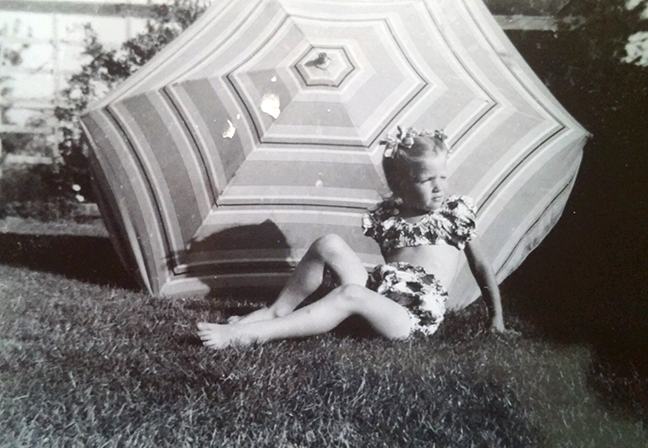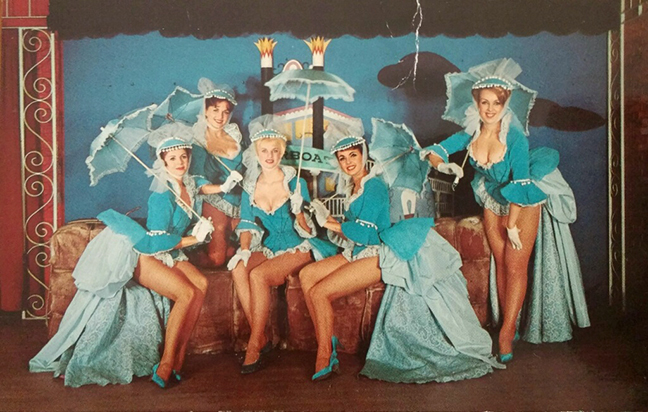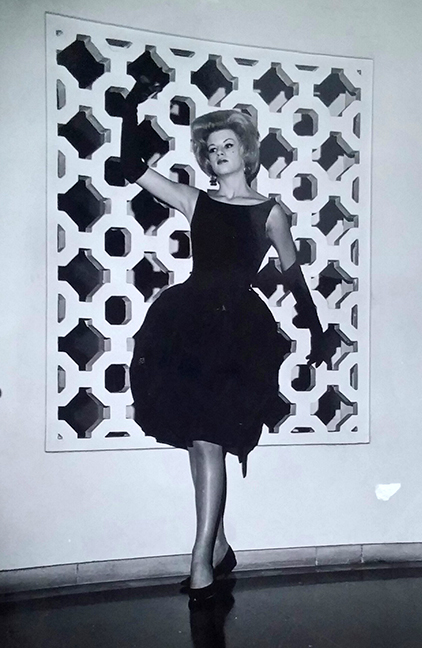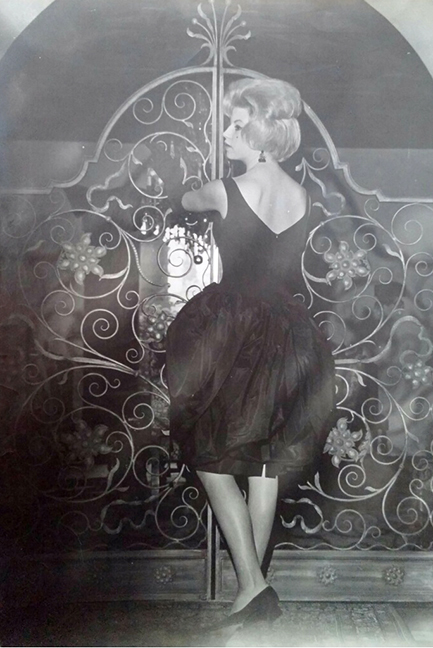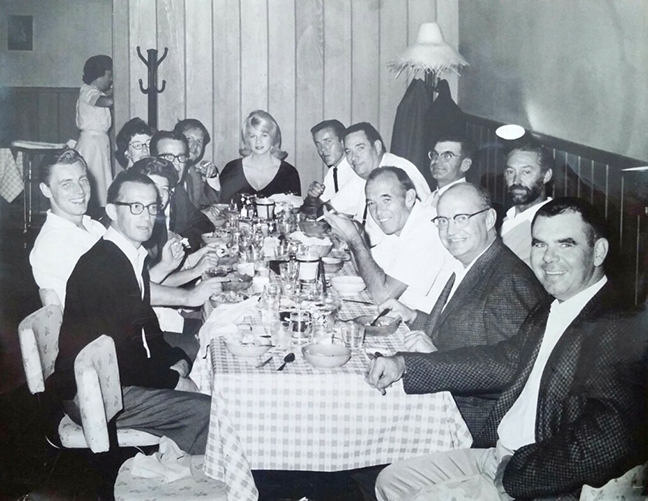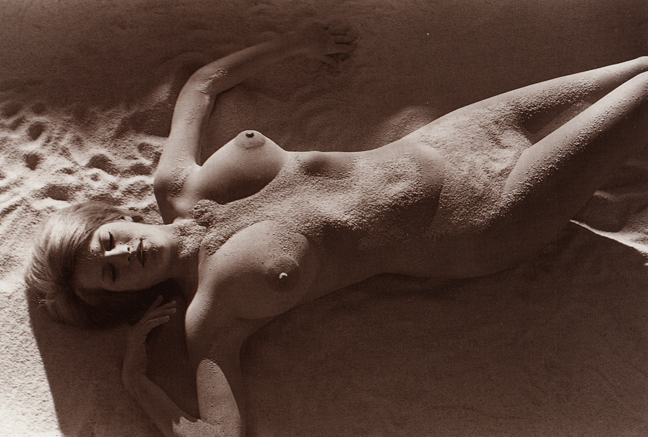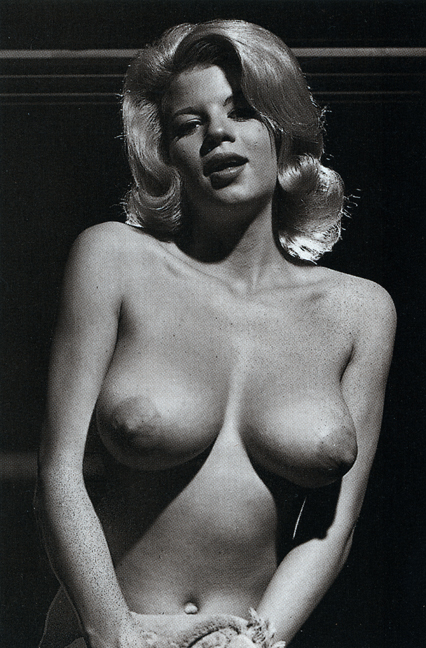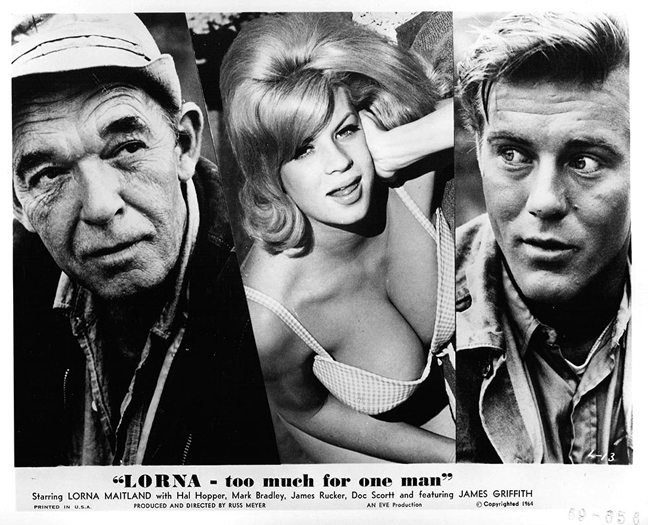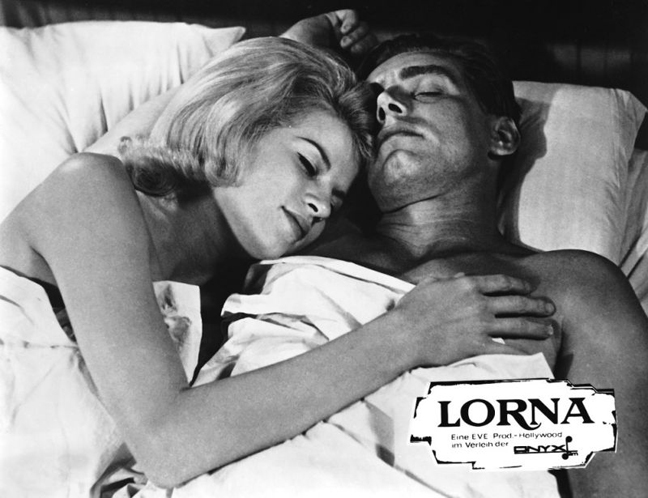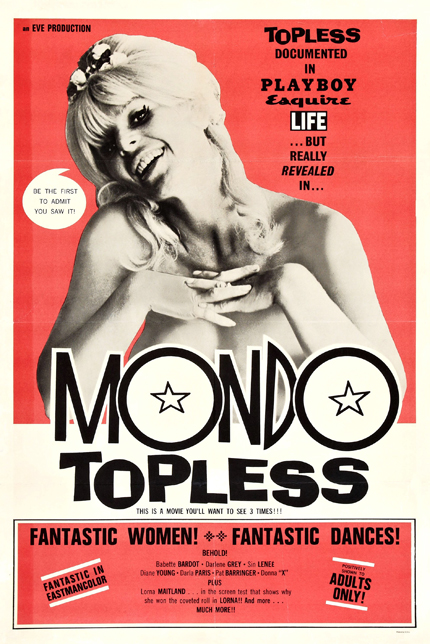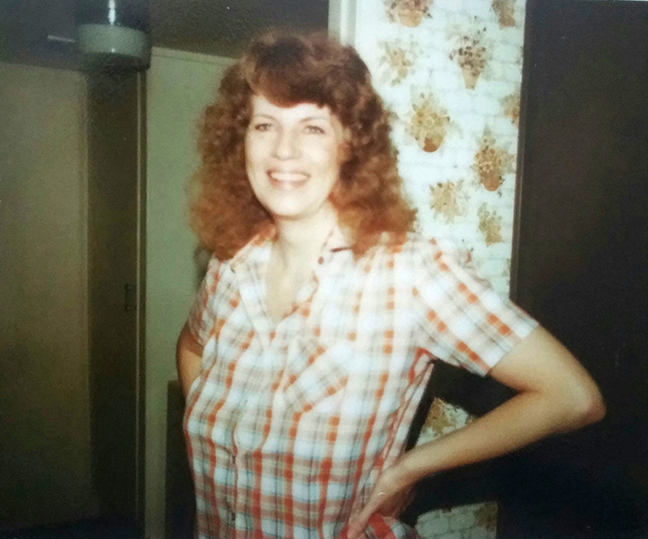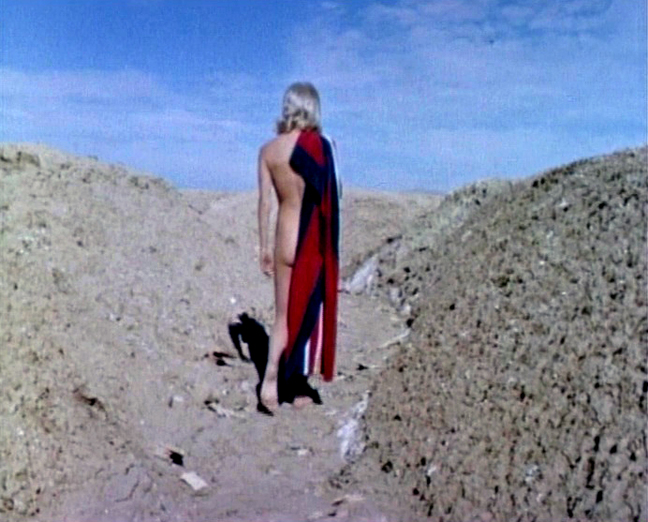When Russ Meyer was casting the lead for his ground-breaking film ‘Lorna‘ (1964), he knew exactly what he wanted. In the words of the movie’s publicity, ‘Lorna‘ was “a wanton of unparalleled emotion… unrestrained earthiness… and destined to set a new standard of voluptuous beauty.” In short ‘Lorna’ was “a woman too much for one man.”
In Lorna Maitland, Russ found his star. She was a voluptuous California dancer with pneumatic measurements of 42D-22-36 who perfectly embodied the sexually unsatisfied young wife whose unrestrained lust triggers violence in a small town.
‘Lorna‘ was a major success for Meyer despite being prosecuted for obscenity in several states, and set the template for his future films – two of which also starred Lorna Maitland.
But rather than become a star, Lorna disappeared abruptly. So what happened to Lorna Maitland, and where is she today?
The Rialto Report tracked down her family, her friends, and her first manager to tell her story.
_______________________________________________________________________________________________
Lorna Maitland: Her Story
When we meet the eponymous star of Russ Meyer’s 1964 film Lorna, it’s clear that she’s being suffocated by her small-town married life. Her husband Jim loves her but can’t satisfy her need for passion. Her bucolic surroundings are picturesque but offer none of the excitement she craves.
And in many ways the role of Lorna was a perfect match for its star, Lorna Maitland, but one that almost didn’t come to pass…
Beginnings
Lorna Maitland was born Barbara Ann Popejoy on November 19, 1943 in Glendale, a suburb of Los Angeles. Her sister remembers Barbara as being whip-smart even as a young girl. And if old family photos tell even half the story, Barbara was a natural born entertainer from an early age.
 When she was seven years old, Barbara’s parents moved the family to Norman, Oklahoma, a city twenty miles south of downtown Oklahoma City. Norman was a fraction the size of Los Angeles, and a world away from its bright lights. It wasn’t without its charms but the only excitement came from its geographical location within Tornado Alley, the most tornado-prone area in the world. For a young girl like Barbara who longed to be an actress and entertainer, Norman was a million miles from where she wanted to be.
When she was seven years old, Barbara’s parents moved the family to Norman, Oklahoma, a city twenty miles south of downtown Oklahoma City. Norman was a fraction the size of Los Angeles, and a world away from its bright lights. It wasn’t without its charms but the only excitement came from its geographical location within Tornado Alley, the most tornado-prone area in the world. For a young girl like Barbara who longed to be an actress and entertainer, Norman was a million miles from where she wanted to be.
 Barbara tried to fit in, seeking out friends and joining the school cheerleading squad as she entered her teenage years, but ultimately she thought Norman stifled her and wouldn’t let her achieve her dreams. She wasn’t prepared to give those dreams up, so in 1959 at the age of 16, Barbara left home.
Barbara tried to fit in, seeking out friends and joining the school cheerleading squad as she entered her teenage years, but ultimately she thought Norman stifled her and wouldn’t let her achieve her dreams. She wasn’t prepared to give those dreams up, so in 1959 at the age of 16, Barbara left home.
Say Hello to Hollywood
After leaving Oklahoma, some accounts have Barbara heading to New York to model for Saks Fifth Avenue’s flagship department store. She soon wound up in Reno, Nevada where she found work with a dance troupe known as the Delta Queens. The Queens performed at the Harolds Club, part of a nightly variety show in the club’s famous 7th floor Fun Room. Barbara had a reasonable singing voice, and was part of the show that presented the music and color of the historic riverboat days in a review called ‘Riverboat Follies’.
Her engagement in Reno was short lived; the staid routine soon bored Barbara and she grew restless again. She’d grown up fast since leaving home and in 1960 at the age of 17, she decided she was ready to pursue her dreams of Hollywood stardom in Los Angeles.
She found lodging at a small boarding house for aspiring actresses and joined the legion of hopefuls on the audition circuit. To make ends meet she danced in many of the growing number of go-go clubs that were becoming popular in the early 1960s.
 In 1962, one audition led her to the door of entertainment producer and promoter Clancy Grass III. Grass had been in the business for over a decade and had recently found success promoting recordings by the Paris Sisters. The Sisters were a musical trio managed by legendary record producer, publisher, and record label owner, Lester Sill. Sill was well-connected and was assisted in his work by up-and-coming music industry associates, Lee Hazelwood and Phil Spector.
In 1962, one audition led her to the door of entertainment producer and promoter Clancy Grass III. Grass had been in the business for over a decade and had recently found success promoting recordings by the Paris Sisters. The Sisters were a musical trio managed by legendary record producer, publisher, and record label owner, Lester Sill. Sill was well-connected and was assisted in his work by up-and-coming music industry associates, Lee Hazelwood and Phil Spector.
Grass had fallen for Albeth, one of the Paris sisters, and smelt a money-making opportunity to create his own version of the trio that he could manage by himself. He knew a talented singer called Jim Bailey, and so decided that he’d work up an act with Jim as the male lead – accompanied by a trio of beautiful female backup singers.
Grass put a call out for women vocalists, and held auditions with his partner Steve Roland. Barbara Popejoy was one of the hopeful respondents who answered the call. Grass clearly remembers Barbara’s audition to this day, recalling that “she wasn’t the greatest singer, but she was truly gorgeous.” That was good enough for Grass, and Barbara was offered a role in the backup trio.
For months, Grass worked with the group paying for rehearsal sessions to develop the act. He’d seen the success of the Paris Sisters so he figured it was worth the time and effort to get it right, but in the end Grass had to admit defeat. Despite his connections in the music industry, this group just wasn’t going anywhere, so as summer approached he decided to dissolve the group, and focus his efforts on just being an agent.
Meeting Russ Meyer
Barbara returned to dancing, modeling and auditioning. Even though the singing act had been dismantled, Grass had faith in her, and Barbara still had an agreement with Grass naming him her sole representative.
In 1963, Barbara saw an ad in the August 6th edition of Daily Variety looking for a “voluptuous girl” to the play the lead in an independently produced motion picture. She turned to Grass and asked for advice.
The director behind the ad was Russ Meyer, who up until that point had made a handful of nudist films. His first – The Immoral Mr. Teas (1959) – had been the first American “above ground” movie since the pre-Code early sound era to show female nudity without the pretext of naturism. It was hugely successful costing $24,000 but grossing more than $1,500,000, and popularized the nudie cutie genre.
 The movie Barbara saw advertised was Meyer’s eighth and marked a radical departure in style. It was his first rural gothic film with a dramatic storyline. In the words of author and fellow director William Rotsler, “it established the formula that made him rich and famous, the formula of people filmed at top hate, top lust, and top heavy.” It would be the first time Meyer shot on 35mm, and was supported by a ten day shooting schedule and a $37,000 budget – the largest he’d ever worked with. Meyer called his new film, ‘Lorna’.
The movie Barbara saw advertised was Meyer’s eighth and marked a radical departure in style. It was his first rural gothic film with a dramatic storyline. In the words of author and fellow director William Rotsler, “it established the formula that made him rich and famous, the formula of people filmed at top hate, top lust, and top heavy.” It would be the first time Meyer shot on 35mm, and was supported by a ten day shooting schedule and a $37,000 budget – the largest he’d ever worked with. Meyer called his new film, ‘Lorna’.
Today, Grass says he remembers agreeing with Barbara that he’d visit Meyer armed with her publicity photos, and push her for the lead role. However he only vaguely recalls meeting Russ Meyer and is keen to downplay any involvement in a sexually exploitative affair like ‘Lorna’.
What neither Barbara nor Grass knew was that the role advertised had in fact already been cast. As Russ Meyer admits in his autobiography ‘A Clean Breast’, the part had originally been offered to Maria Andre, an actress from Russ Meyer’s 1963 film ‘Heavenly Bodies!’ Maria had auditioned and read well, but Russ had noted a big drawback: Her breasts were not nearly as prominent as he wanted. Desperate to have this important requirement fulfilled, he continued looking for his leading lady.
The casting call drew 132 aspiring actresses but none seemed to have the acting ability combined with the outlandish physical proportions that Meyer craved. With the production schedule fast approaching, time was running out so Meyer reluctantly started rehearsals with Maria Andre.
 According to ‘A Clean Breast’, Russ’ wife and business partner Eve revealed a secret to him at the last moment. At the casting call, Eve had noticed an attractive, well-endowed young lady by the name Barbara Pope among the auditioning actresses. Her manager, Grass, had sidled up to Eve pressing a selection of naked Polaroids of Barbara into Eve’s hand to reinforce his client’s talents; Eve now presented those photos to her husband. She’d kept this from Russ until now for fear of encouraging any more of his marital indiscretions.
According to ‘A Clean Breast’, Russ’ wife and business partner Eve revealed a secret to him at the last moment. At the casting call, Eve had noticed an attractive, well-endowed young lady by the name Barbara Pope among the auditioning actresses. Her manager, Grass, had sidled up to Eve pressing a selection of naked Polaroids of Barbara into Eve’s hand to reinforce his client’s talents; Eve now presented those photos to her husband. She’d kept this from Russ until now for fear of encouraging any more of his marital indiscretions.
Barbara herself remembered the casting call:
“I didn’t feel as though I was right for the part. When we went for the interview I was dressed with a rather secretarial… and I didn’t get too much of a reaction from (Russ). I guess (Russ had) seen quite a few lovely girls. But my manager is very persistent and he felt I had a good chance in getting the picture. So he insisted on taking some pictures of me that reveal just a little bit more of my physical attributes you might say.”
Today Grass refutes this – and denies ever passing around nude Polaroids. Whatever the truth, as soon as Meyer set eyes on Barbara, a rush of relief passed over him. He’d finally found his leading lady for ‘Lorna’.
Meyer asked screenwriter and actor Jim Griffith to contact Maria Andre with news of her dismissal. The request vexed Griffith, who questioned the ethics of a last minute switch, but Meyer set him straight in his inimitable style:
“Fuck your rosy ethics and a great deal more… I’ve got to live with ‘Lorna’ for a lot of years. Now pay off Miss Andre… I suggest a thousand… paint me as you wish. I’m your prick heavy. Eve will provide a check.
And (get) this giant-titted mama over to your joint to begin rehearsing. I don’t give a damn if she can’t even pronounce her own name. This girl IS Lorna!”
Barbara called Glass to tell him that she had the role, and it proved to be the last time they would ever speak. Glass went on to produce more music as well as a number of television shows and films. A year or so later after their last conversation, he heard that Barbara had been admitted to a mental hospital but never knew if that was true.
The Birth of Lorna Maitland
 As much as Russ liked Barbara for the part of ‘Lorna’, he soon found started to find fault. For a start he hated her strange name, so he re-christened her Lorna Maitland. He’d once been in love with an attractive secretary called Lorna, and he liked the name Maitland because it sounded upscale, striking a nice contrast with the character’s small town roots.
As much as Russ liked Barbara for the part of ‘Lorna’, he soon found started to find fault. For a start he hated her strange name, so he re-christened her Lorna Maitland. He’d once been in love with an attractive secretary called Lorna, and he liked the name Maitland because it sounded upscale, striking a nice contrast with the character’s small town roots.
What Meyer did like about Lorna however could be summarized simply; her gravity-defying breasts. The truth was that in the spring of 1963, Barbara had become pregnant by a boyfriend, which had the effect of enhancing her already impressive chest.
Or in the words of Meyer himself:
“After a couple of beats, Miss Joy reflecting on the character’s crass shortchange job the night before angrily throws free the thin covers, revealing a proud, pointy bosom of truly heroic proportions rising up to hove. No. Heaving-to, swinging to a three-quarter’s view. Astounding! Truly. Whatever the position, her large conical ‘challengers’ retaining the same stimulating configuration even whilst registering the critical apex of the chick’s 180-dgree rotation. At once, bending over. Voila! The right pregnant nipple touching/caressing the lady’s kneecap!!! Fuck yes, the kneecap!!! With the be-nippled breast, yes, even while impacting, retaining its wondrously groovy size and shape!!!!! Meyer grunts the only polite, appropriate term he dares: Box Office!”
Meyer always claimed he knew his star was pregnant, but it didn’t matter to him. Barbara had the style and the breasts, and that was all that mattered.
‘Lorna’ began shooting in September 1963 in the small town of Walnut Grove, California. Meyer chose the location carefully, knowing it would contribute greatly to the look he was aiming for. He wanted to style the film after Italian melodramas created by directors like Vittorio De Sica that starred buxom beauties like Gina Lollobrigida.
 Meyer remembers Barbara showing up to the set on the first day having traveled by public transport, a five-hour trip north from Los Angeles. Meyer had asked her to come up a few days before the rest of the crew. He wanted to shoot the film’s pivotal nude bathing scene with as few people gawking as possible. But according to Barbara in an interview at the time, Meyer needn’t have worried:
Meyer remembers Barbara showing up to the set on the first day having traveled by public transport, a five-hour trip north from Los Angeles. Meyer had asked her to come up a few days before the rest of the crew. He wanted to shoot the film’s pivotal nude bathing scene with as few people gawking as possible. But according to Barbara in an interview at the time, Meyer needn’t have worried:
“No one seemed to be any different than they were when I was dressed. I was working and as far as I thought, everyone else was thinking the same thing, you know? I found no reaction from anyone.
I enjoyed that scene [nude bathing in the lake] quite a bit cause it gave me an opportunity to show another part of this Lorna character. I enjoyed that because I like to bring variety into anything. I think it’s the spice of life – and the spice of Lorna.”
A few days later the rest of the crew arrived – and tensions were already evident between Meyer and Barbara. “She did a number on my head. She wasn’t going to be pushed around,” remembered Meyer. Meyer later admitted that Barbara was the one star that “absolutely hated [my] guts”. Somehow they made it through shooting, and by early 1964, Meyer had completed post-production and was ready to screen his film.
‘Lorna’ – The Reception
Meyer arranged for the first screening of ‘Lorna’ at the Monica Theater in Hollywood for potential distributors. He continued with similar screenings in cities such as Minneapolis, Philadelphia, Boston and New York. He even arranged a showing at the Playboy Mansion, attended by both Hugh Heffner and Barbara herself.
The film had it’s official premiere at the Art Theater Guild’s Kiva Theater in Scottsdale, Arizona shortly after. The theater’s creative manager Les Natali crafted a suitably over-the-top advertising campaign:
Without artistic surrender…without compromise, without question nor apology, an incredibly sensual motion picture was made. ‘Lorna’.
The story of a woman… men will love, women will understand.
‘Lorna’ is more than a woman’s name. ‘Lorna’ is more than a motion picture. ‘Lorna’ is a brutal scrutinization of the important realities of power, prophesy, freedom and justice in our society against a background of violence and lust where simplicity is only a façade.
Meyer re-inforced the marketing of the ‘Lorna’ in his own words, saying that in making the film, he “attempted to bring life down to the basic essentials, to show the human condition as it really is or as it can be and to depict rather than to imply.”
Many reviewers had a positive reaction to ‘Lorna’. Film critic John Wasserman described the film in the San Francisco Chronicle:
“A simple, homey tale of murder, lust, adultery and sadism all balancing precariously on Lorna Maitland’s huge, quivering bosoms. But all is not well…her husband’s accomplishments in the hearty game of bedroom diversions are not what they might be and Lorna…like any other red-blooded American girl with an 86-inch chest…considers some literature in a plain brown wrapper…Lorna often utilizes a wardrobe of absolutely nothing…and it should be pointed out that this alone is worth the price of admission…”
In the aftermath of the film’s release, Barbara was laid low with the birth of the baby boy she’d been carrying during the filming of ‘Lorna’. Shortly after the baby was born, Barbara put it up for adoption leaving her free to continue pursuing her professional dreams.
After ‘Lorna’
 ‘Lorna’ proved to be a great success for Meyer, earning a very respectable profit and setting the mold for many of his signature films. Meyer invited Barbara to play the extravagant hooker Clara Belle in his next movie, ‘Mudhoney’ (1965), but this time the film was a financial failure. Meyer partly blamed Barbara for the film’s lack of success, holding her post-pregnancy cleavage responsible. Meyer’s blunt assessment? “Her tits had kind of gone south.”
‘Lorna’ proved to be a great success for Meyer, earning a very respectable profit and setting the mold for many of his signature films. Meyer invited Barbara to play the extravagant hooker Clara Belle in his next movie, ‘Mudhoney’ (1965), but this time the film was a financial failure. Meyer partly blamed Barbara for the film’s lack of success, holding her post-pregnancy cleavage responsible. Meyer’s blunt assessment? “Her tits had kind of gone south.”
But 1965 was fortunate for Barbara on another front. She met a handsome and talented musician by the name of Benn Rocco and the two quickly fell in love. Benn was a member of a doo-wop style acapella group, ‘Danny and the Memories’, but times were changing and doo-wop was quickly being edged out by rock and roll. Sensing the change and hoping for greater success, the group decided to head to San Francisco – the epicenter of the counter-culture movement. When Benn asked Barbara to join him, she turned away from her Hollywood dreams and headed north to accompany him.
 When they arrived in San Francisco, Barbara and some of the other band girlfriends began topless dancing to support themselves and their boyfriends. The band quickly shed the name Danny and the Memories and became ‘Psyrcle’, a play on the psychedelic movement. The change in the group wasn’t just musical. The guys began smoking a lot of marijuana and dropping acid regularly; their girlfriends – including Barbara – soon found themselves doing the same.
When they arrived in San Francisco, Barbara and some of the other band girlfriends began topless dancing to support themselves and their boyfriends. The band quickly shed the name Danny and the Memories and became ‘Psyrcle’, a play on the psychedelic movement. The change in the group wasn’t just musical. The guys began smoking a lot of marijuana and dropping acid regularly; their girlfriends – including Barbara – soon found themselves doing the same.
The band’s drug use became prodigious but they got it together to record a single. They found a local musician, the future funk superstar Sly Stone, to produce it and titled the track ‘Baby, Don’t Do That’. Barbara and Benn had gotten married in the summer of 1966, and Barbara offered to bankroll the single with the money she had in the bank from ‘Lorna’. Released by Lorna Records, the record made the rounds but was ultimately a flop.
 Demoralized by the lack of success, Psyrcle went on a hiatus. Frustrated by the band’s lack of drive, Benn quit shortly after the record’s release. Psyrcle regrouped shortly afterwards and eventually became Crazy Horse, Neil Young‘s backing band. Benn remembers, “Our association with drugs was the demise of our (original) group, no question about it”.
Demoralized by the lack of success, Psyrcle went on a hiatus. Frustrated by the band’s lack of drive, Benn quit shortly after the record’s release. Psyrcle regrouped shortly afterwards and eventually became Crazy Horse, Neil Young‘s backing band. Benn remembers, “Our association with drugs was the demise of our (original) group, no question about it”.
Another victim of the drug culture that had enveloped the band was Barbara herself. Seemingly an acid casualty, Barbara had started to become more and more detached from the world around her. This had a detrimental effect on her ability to pursue her acting career and take advantage of any momentum developed by the success of ‘Lorna’. When she received a call from a major Hollywood studio with an offer to make two movies a year for seven years, it barely registered. The drugs had sapped her ambition and she turned the offer down. That contract went instead to the actress Angie Dickinson.
By this time, old footage of Barbara had appeared in a couple of other films: Russ Meyer re-used some 35mm Kodachrome test footage that he’d shot of her whilst making ‘Lorna’ in his 1966 film ‘Mondo Topless’. Similarly Texan director Dale Berry had shot a sequence of a bikini-clad Barbara dancing in a club in 1965 which he added to his 1967 film ‘Hip Hot and 21’. But outside of these appearances, Barbara would never appear in front of a movie camera again. Her dreams of Hollywood stardom were relegated to the past.
After Fame
In 1967, Barbara and Benn welcomed son Beniamino into the world, and seven years later, they had a daughter Gina. But despite the arrival of two children and the love she shared with her husband, Barbara’s mental state was deteriorating. She suffered from psychotic episodes which Benn attributes to her LSD use.
Barbara began to spend periods of time in mental health institutions to deal with her psychosis. Daughter Gina’s few memories of her mother in those years are of repeated breakdowns. There were occasional good times in between when Barbara would sipped Tab diet soda and smoke cigarettes whilst telling her daughter about the glamour of places she’d been like Las Vegas and Atlantic City.
By the time Gina was six years old, Benn decided that even though he loved Barbara he had to divorce her for the well being of the children. The 1980 split triggered another psychotic episode, which landed Barbara in an institution.
When she was released, she began a pattern of behavior that she would continue for years. Barbara would hitchhike across the country, taking on different names and personalities and sometimes briefly moving in with men she met along the way.
She lived in Montana for a period with a man and his daughter until she called her parents in 1986 to say she was bored and wanted to come home. Gina was twleve at the time and remembers Barbara coming to visit her and her brother. Gina remembers being shocked by how rough her mother looked. There were bizarre aspects to Barbara’s behavior as well, such as her insistence that she was a best friend of the singer, Madonna.
Gina last spoke with her mother in 1989. Barbara had been back in a mental institution after she had called her parents for help and was now in low income housing living near them. Gina had called her grandparents with terrible news to share – her brother Beniamino had been killed in a motorcycle accident. Barbara’s parents didn’t want Gina to convey the news to her mother as they feared it would trigger another psychotic episode. Gina promised not to say anything about her brother when they put her mother on the phone. When they started speaking, Barbara didn’t even appear to be clear who Gina was. When she finally remembered, she thought Gina was many years older than her actual age. They hung up after a brief exchange.
Gina heard through extended family that her mother had another psychotic episode in 1991 after being taken off her medication to remove her teeth. She tried reaching her grandparents for information but they stopped returning her calls. Since then, neither Gina nor her father Benn has had any news of Barbara.
Epilogue
Barbara’s whereabouts today are not known.
Gina would love to know what has happened to her mother in the intervening years. Is Barbara alive? Is she safe? Is she sane? Information has been scarce.
Gina spoke briefly with Russ Meyer in 2000. Meyer shared his memories of Barbara with Gina, describing his Lorna as a little wild, a little promiscuous and a little nutty. He did remember that Barbara had a baby boy as they were in the middle of post-production for ‘Lorna’ but did not know what happened to Gina’s half brother who had been given up for adoption. And he had no idea what became of Barbara since they last saw each other in the late 1960s. He sent Gina his films that starred her mother and a note wishing her well.
Several years ago Gina and her Aunt Rosina – Benn Rocco’s sister – were discussing their admiration for the so-called ‘Long Island Medium’, Theresa Caputo. Caputo promoted a national network of mediums across the country so Gina and her aunt organized a gathering to see if they could learn anything about Barbara’s fate. At $300 per attendee it was an expensive undertaking but both women felt it would be worth it. At one point during the gathering the medium told the attendees that there was a woman going by the name Barb or Barbie standing behind the ghost of her grandfather. Gina still isn’t sure if she can believe it but she finds solace in thinking that her mother is no longer suffering.
The Rialto Report has long been keen to find Barbara. We found evidence of her living on and off in low income housing in Las Vegas up to 2007. More worryingly we also found a spate of arrest records for her for public disturbance offenses in Orange and Santa Monica counties, California from the late 1990s to the early 2000s. The last of these is from 2008. And then the trail goes cold.
Wherever Barbara is, we hope she is at peace. And that on some level she recognizes the contributions she’s made to the cultural history we value.
Do you have any information on Barbara Popejoy / Lorna Maitland? If so, we’d love to hear from you at info@therialtoreport.com
The post Whatever Happened to Lorna Maitland?
Her Beauty, Tragedy and Mystery appeared first on The Rialto Report.
